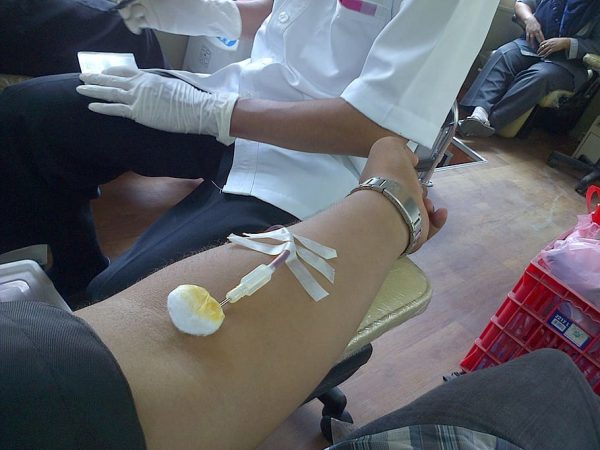
In the past year, the American Red Cross issued several statements regarding critical blood shortages in various locations throughout the United States. Blood shortages are not unique to the United States; a recent study by the World Health Organization found 107 out of 180 countries have insufficient amounts of blood. While organizations like the American Red Cross try to remedy blood shortages, sociologists have found that blood shortages are closely related to donors’ feelings of altruism and the existing structures of donor organizations.
Social psychologists have explained the decision to give blood in terms of altruism, acting in the interest of others, while sociologists tend to explain blood donation in terms of organizations and institutions. Voluntary donations have historically been portrayed as more desirable or as a civic duty, but scholars note that the most common reason for not giving blood is simply not being asked. They also find that personal motivations (such as a general desire to help, sense of duty, and empathy) are more likely to be strengthened with each donation, while external motivations (emergencies, peer pressure, etc.) are likely to decrease over time.
- Jane Allyn Piliaavin and Hong-Wen Charng. 1990. “ALTRUISM: A Review of Recent Theory and Research.” Annual Review of Sociology 16: 27-65.
As a result, donation centers have been encouraged not to pay donors due to a fear that this would discourage altruistic givers. Paying donors also raised other concerns, such as the belief that paying donors would encourage exploitative relationships between economically unstable individuals and donation centers. Additionally, there were also fears that paid blood was unsafe blood, as it would motivate high-risk groups to lie about their status for money.
- R.M. Titmuss. 1997. In Ashton A. Oakley (eds): The Gift Relationship: From Human Blood to Social Policy. The New Press: 57-305.
- Douglas Starr. 2002. Blood: An Epic History of Medicine and Commerce. New York: Alfred A. Knopf Inc.
Altruism is not random or individual, it is driven by institutions. For example, in places where the Red Cross is prevalent, people involved in religious or volunteer organizations donate the most blood. Alternatively, in countries where independent blood banks operate, this is not true. In fact, state systems, according to Healy, tend to have larger donor bases. Thus, the organizational, rather than individual desire to give, largely drives blood donations.
- Kraig Beyerlein. 2016. “The Effect of Religion on Blood Donation in the United States.” Sociology of Religion: 77(4): 408-435.
- Kieran Healy. 2000. “Embedded Altruism: Blood Collection Regimes and the European Union’s Donor Population.” American Journal of Sociology 105(6): 1633-1657.
- Kieran Healy. 2006. The Last Best Gifts: Altruism and the Market for Human Blood and Organs. Chicago: University of Chicago Press.

Comments